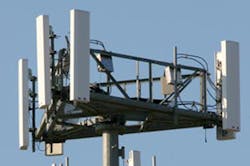Upgrade Frequency-Selective Surface Filters From 2D To 3D
This file type includes high resolution graphics and schematics when applicable.
By increasing the selectivity and out-of-band rejection of bandpass filters for frequency-selective surfaces (FSSs), it is possible to enhance the operation of antenna subreflectors, radomes, and polarizers. Such an approach limits the signal-to-noise ratio (SNR) of the incoming RF signals. Most FSS bandpass filters exhibit low selectivity and unstable angular response. Although cascading enhances the filtering characteristics of these spatial filters, it is still difficult to design bandpass FSS filters to obtain wide out-of-band rejection and stable response under a large incidence angle variation.
Adding stubs, coupled lines, or electromagnetic (EM) bandgap structures can add transmission zeroes at finite frequencies. It is therefore possible to enhance the filtering characteristics of two-dimensional (2D) microstrip filters. Bo Li and Zhongxiang Shen of Nanyang Technological University, Singapore, have adopted this technique to design and test three-dimensional (3D) FSS structures with multiple transmission zeroes introduced at desired frequencies. These filter designs are adapted from shielded microstrip lines with shorting vias that feature bandstop response.
Using a modern RF substrate (Rogers 4230) and aluminum to fabricate a surface matrix of 30 × 27 unit cells, the team constructed a 3D FSS with T-type, T-shaped, resonant inserts. The 2D unit cells are fabricated on large printed-circuit boards (PCBs) and then cut into the unit cells. The cell sizes are designed so that the periods along the x and y axis of the cells are less than one-eighth the free-space wavelength at 8.2 GHz, ensuring stability under a large variation of incident angles.
The FSS was tested under transverse-electric (TE) polarization with two incident angles (0 and 40 deg.). The FSS was observed to be stable under the different incident angles with transmission poles at 7.9 and 8.4 GHz in the passband and transmission zeroes at 6.1, 10, and 17.9 GHz in the stopband. See “Three-Dimensional Bandpass Frequency-Selective Structures With Multiple Transmission Zeros,” IEEE Transactions on Microwave Theory and Techniques, Oct. 2013, p. 3578.
This file type includes high resolution graphics and schematics when applicable.
About the Author
Jean-Jacques DeLisle
Jean-Jacques graduated from the Rochester Institute of Technology, where he completed his Master of Science in Electrical Engineering. In his studies, Jean-Jacques focused on Control Systems Design, Mixed-Signal IC Design, and RF Design. His research focus was in smart-sensor platform design for RF connector applications for the telecommunications industry. During his research, Jean-Jacques developed a passion for the field of RF/microwaves and expanded his knowledge by doing R&D for the telecommunications industry.

